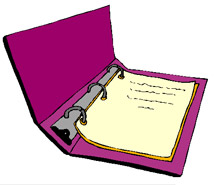To design and study of Diode Clipper.
Introduction
A clipper is a device designed to prevent the output of a circuit from exceeding a predetermined voltage level without distorting the remaining part of the applied waveform.
A clipping circuit consists of linear elements like resistors and non-linear elements like junction diodes or transistors, but it does not contain energy-storage elements like capacitors. Clipping circuits are used to select for purposes of transmission, that part of a signal wave form which lies above or below a certain reference voltage level. Thus a clipper circuit can remove certain portions of an arbitrary waveform near the positive or negative peaks. Clipping may be achieved either at one level or two levels. Usually under the section of clipping, there is a change brought about in the wave shape of the signal.
Clipping Circuits are also called as Slicers, amplitude selectors or limiters. Using square waveform it is easier to analyze the clipper network than sinusoidal waveform, because in square waveform only two levels (i.e. two DC level) have to be considered. The basic components required for a clipping circuit are – an ideal diode and a resistor. In order to fix the clipping level to the desired amount, a dc battery must also be included. When the diode is forward biased, it acts as a closed switch, and when it is reverse biased, it acts as an open switch. Different levels of clipping can be obtained by varying the amount of voltage of the battery and also interchanging the positions of the diode and resistor.







